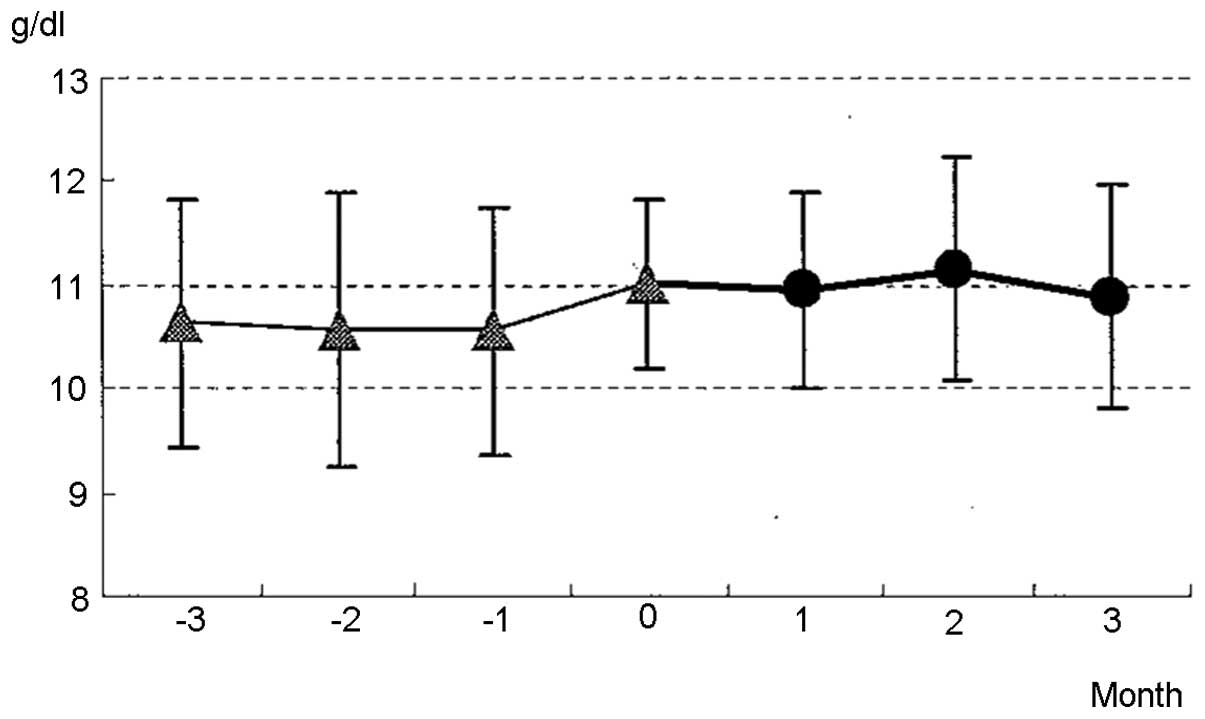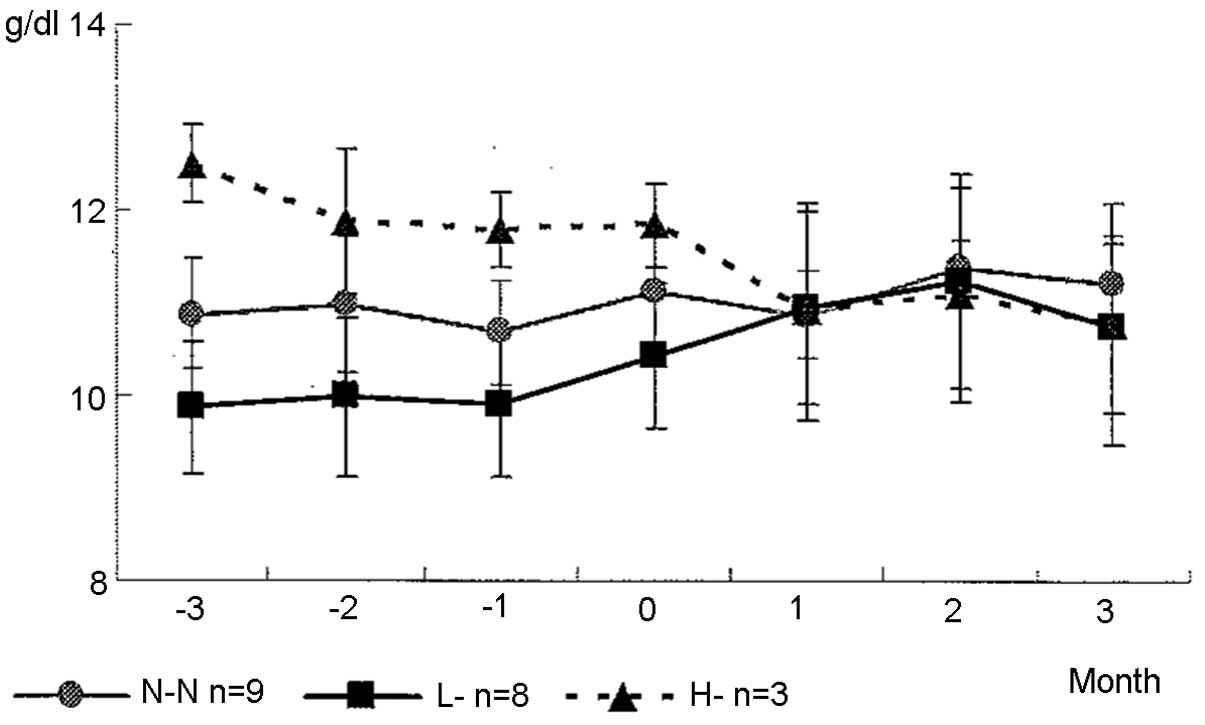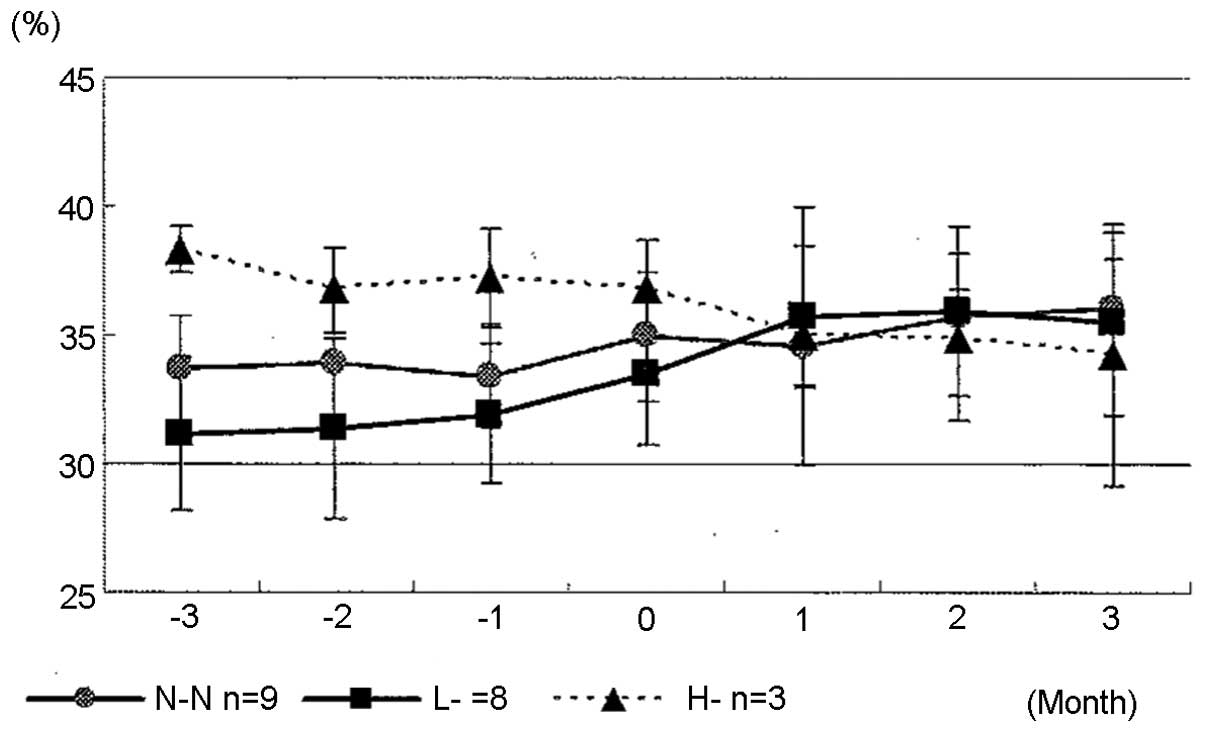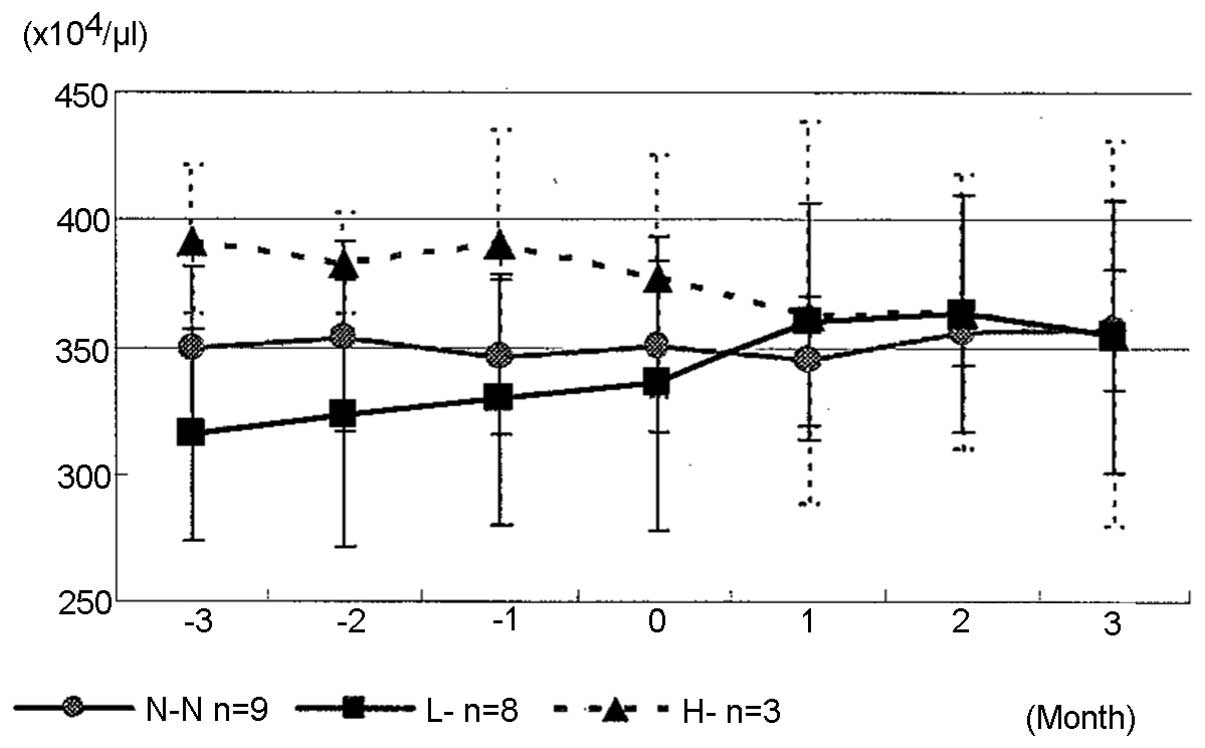Efficacy of once or twice weekly administration of epoetin κ in patients receiving hemodialysis: A retrospective study
- Authors:
- Shoichiro Ohta
- Nobuhiro Yasuno
- Yuki Inomoto
- Kaori Matsuda
- Yoshihiko Nakagawa
- Isoji Sasagawa
- Masahiko Tanaka
-
View Affiliations
Affiliations: Department of Urology and Hemodialysis, Kan‑Etsu Hospital, Tsurugashima, Saitama, Japan, Department of Pharmacy, Kan‑Etsu Hospital, Tsurugashima, Saitama, Japan, Minami‑Cho Clinic, Sakado, Saitama, Japan, Department of Urology, Yamagata Tokushukai Hospital, Yamagata, Japan, Department of Rheumatology, Kan‑Etsu Hospital, Tsurugashima, Saitama, Japan
- Published online on: November 6, 2013 https://doi.org/10.3892/etm.2013.1384
-
Pages:
27-30
Metrics:
Total
Views: 0 (Spandidos Publications: | PMC Statistics:
)
Metrics:
Total PDF Downloads: 0 (Spandidos Publications: | PMC Statistics:
)
This article is mentioned in:
Abstract
Several clinically approved recombinant erythropoietin (rEPO) preparations, such as epoetin‑β, epoetin‑δ and the epoetin‑α derivative, darbepoetin‑α, have been commercially produced. Since the expiration of patent protection, a number of novel rEPO biosimilars have been approved on the world market. In 2010, epoetin‑κ, which is biosimilar to epoetin‑α, was clinically approved. Epoetin‑κ is a biopharmaceutical product that is based on serum‑free media following master cell bank preparation. The present study analyzes the results obtained during a six‑month observation period, in which the administration of epoetin‑β was switched to that of epoetin‑κ. In a cohort of patients receiving chronic dialysis, who were clinically in a state of relative calm and were in control of their renal anemia, it was possible to sustain good control of the anemia by reducing the frequency of the epoetin‑β administration from the conventional and empirically determined three times a week to twice a week, and further to once a week. Furthermore, the good control was maintained upon changing from the administration of epoetin‑β to that of epoetin‑κ. Moreover, three months subsequent to this switch, the degree of instability observed among the patients had decreased. Despite the fact that the situation following the changeover requires further investigation, it may be concluded that the results obtained in this study are indicative of the clinical equivalence and efficacy of epoetin‑κ.
View References
|
1
|
Pisoni RL, Bragg-Gresham JL, Young EW, et
al: Anemia management and outcomes from 12 countries in the
Dialysis Outcomes and Practice Patterns Study (DOPPS). Am J Kidney
Dis. 44:94–111. 2004. View Article : Google Scholar : PubMed/NCBI
|
|
2
|
Hirai T, Sugiya N, Nakashima A, Takasugi N
and Yorioka N: Switching from epoetin alpha to darbepoietin alpha
in Japanese hemodialysis patients: dose conversion ratio. Nephron
Clin Pract. 111:c81–c86. 2009. View Article : Google Scholar : PubMed/NCBI
|
|
3
|
Okano M, Sato M, Kaneko E and Kageyama S:
Doping control of biosimilar epoetin kappa and other recombinant
erythropoietins after intravenous application. Drug Test Analysis.
3:798–805. 2011. View
Article : Google Scholar
|
|
4
|
Brinks V, Hawe A, Basmeleh MA, et al:
Quality of original and biosimilar epoetin products. Pharm Res.
28:386–393. 2011. View Article : Google Scholar : PubMed/NCBI
|
|
5
|
Haag-Weber M, Vetter A and
Thyroff-Friesinger U; INJ-Study Group. Therapeutic equivalence,
lomg-term efficacy and safety of HX575 in the treatment of anemia
in chronic renal failure patients receiving hemodialysis. Clin
Nephrol. 72:380–390. 2009.PubMed/NCBI
|
|
6
|
European Medicines Agency (EMEA).
Committee for Medicinal Products for Human Use (CHMP). Annex to
guideline on similar biological medicinal products containing
biotechnology-derived proteins as active substance: non-clinical
and clinical issues - guidance on similar medicinal products
containing recombinant erythropoietins. EMEA/CHMP/945626/2005 Corr.
2006.
|
|
7
|
Park SS, Park J, Ko J, et al: Biochemical
assessment of erythropoietin products from Asia versus US Epoetin
alfa manufactured by Amgen. J Pharm Sci. 98:1688–1699. 2009.
View Article : Google Scholar : PubMed/NCBI
|
|
8
|
Jelkmann W: Biosimilar epoetins and other
‘follow-on’ biologics: update on the European experiences. Am J
Hematol. 85:771–780. 2010.
|
|
9
|
KDOQI. KDOQI clinical practice guideline
and clinical practice recommendations for anemia in chronic kidney
disease: 2007 update of hemoglobin target. Am J Kidney Dis.
50:471–530. 2007. View Article : Google Scholar : PubMed/NCBI
|
|
10
|
Ebben JP, Glibertson DT, Foley RN and
Collins AJ: Hemoglobin level variability: associations with
comorbidity, intercurrent events, and hospitalizations. Clin J Am
Nephrol. 1:1205–1210. 2006. View Article : Google Scholar : PubMed/NCBI
|
|
11
|
Schellekens H: How similar do
‘biosimilars’ need to be? Nat Biotechnol. 22:1357–1359. 2004.
|
|
12
|
Singh AK, Szczech L, Tang KL, et al:
Correction of anemia with epoetin alfa in chronic kidney disease. N
Engl J Med. 355:2085–2098. 2006. View Article : Google Scholar : PubMed/NCBI
|
|
13
|
Kissei Pharmaceutical Co; Interview Form,
Epoetin-Alpha Bs injection. 2010.
|
|
14
|
Besarab A, Bolton WK, Browne JK, et al:
The effects of normal as compared with low hematocrit values in
patients with cardiac disease who are receiving hemodialysis and
epoetin. N Engl J Med. 339:584–590. 1998. View Article : Google Scholar : PubMed/NCBI
|
|
15
|
Fishbane S and Berns JS: Hemoglobin
cycling in hemodialysis patients treated with recombinant human
erythropoietin. Kidney Int. 68:1337–1343. 2005. View Article : Google Scholar : PubMed/NCBI
|














